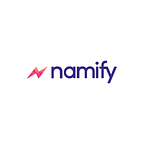An Effective Guide To Lead Generation For Online Businesses
A critical element of running a successful online business relies on creating a lead generation strategy or process. It’s simple, no leads mean no business.
No matter how ground-breaking your product or service is, you won’t be able to thrive if you don’t have buyers. 61% of marketers say generating traffic and leads is their top challenge.
If you’ve been a bit confused about how to go about doing this, here’s a quick guide that explains small business lead generation.
Let’s start by defining a lead, and then we’ll move onto what is lead generation, and why your online business needs it.
Simply put, a lead is a person who has shown an active interest in your business and its products or services. A lead is a prospect who can be converted into a customer.
What is Lead Generation?
The activities, functions, and efforts that are invested to get people to visit your website and take an interest in your core competency are known as lead generation.
According to HubSpot, lead generation is the process of attracting and converting strangers and prospects into someone who has indicated an interest in your company’s product or service.
The most crucial element for any business is its customers. While larger companies have designated teams and higher budgets for advertising spends; SMBs and start-ups rely a lot more on small business lead generation.
This helps them achieve their short-term and long-term goals of expanding their reach bit by bit and acquiring more customers to stay afloat.
To ensure the effectiveness of your lead generation strategy, you must facilitate your customers’ buying decisions by providing them with relevant information wherever possible.
This will build their trust in your brand. Once you have successfully grabbed their attention with helpful content, you will be in a better position to convert them from interested users into real customers.
How Does The Lead Generation Process Work?
Now that you’ve understood what a lead is and what a lead generation process is, let’s walk through the steps of the process of lead generation.
- A stranger visits your business website or blog or social media page and discovers your business through one of these marketing channels.
- The visitor then clicks on your call-to-action(CTA) — an image, button, or message that prompts your visitors to take an action of some sort.
- On clicking on your CTA, the visitor is redirected to a landing page. This page is specifically designed to capture the visitor’s information, also known as lead information.
- The visitor is given an offer in exchange for sharing his/her information. The offer should be something of value and something that the visitor finds difficult to pass up. The offer must be compelling enough and valuable enough for a visitor to share their personal information in exchange for it. The form on your landing page should include fields that are easy to fill.
A quick recap: Visitors land on your marketing channel, click on a CTA that takes them to a landing page where they fill out a form to get an offer. Post this, your visitors become leads.
How To Create A Lead Generation Funnel?
The infographic below will help you understand the process of generating leads better as it provides valuable insights along with an overview of tips and best practices to create a lead generation funnel.
What Are The Best Ways To Generate Leads?
While generating leads can be attributed to having a strong social media presence, a solid SEO and content marketing strategy, creative CTAs, and so on, it really isn’t as complicated as it is made out to be.
The following video by Tyson Zahner will help you understand the best ways to generate leads.
Here are 7 small business lead generation tips and tricks which you can follow to turn your potential customers into real ones:
Read some of the best lead-generating tactics at https://get.online
